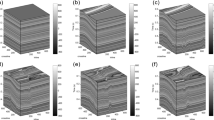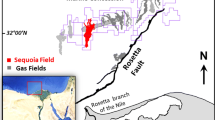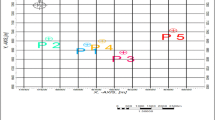Abstract
Subsurface structure identification and modeling in three-dimensional dataset is a very complex problem for the geoscientist. Manual dealing of seismic data involves different complexities and requires more time and effort in order to address the errors and mistakes associated with the quality of seismic data. It is sometimes not straightforward to classify the features of interest especially when the data are of poor quality or associated with complex micro-tectonic regime. This brings the need of automatic working engine which can handle such issues and can find the target-oriented features with the more accuracy. Therefore, advance machine learning approach has been considered as a powerful tool which extensively used in different fields of data science to enhance the quality of data and fast processing. In this study, a new technology has been introduced in the seismic processing and development to make processes in automated routine. This method is based on deep neural network (DNN) that directly translates the raw seismic data into final fault models. A test example of deep semi-supervised learning method was performed for seismic faults and reflector identification without prior information and without going into complete dataset for labeling. This example explains the challenges to the issue and gives the solution to the problem related to the structure and tectonic modeling to explain the performance gain. In this approach of semi-supervised learning, only one of any reflectors and one or two of the faults has been introduced in the learning phase to identify such features in the complete 3D cube. This is an example of deep learning neural network for machine seismic in real case study and allows exploration geoscientists to easier mark the hot spots of their interest before mining or drilling.






Similar content being viewed by others
References
Araya-Polo M, Dahlke T, Frogner C, Zhang C, Poggio T, Hohl D (2017) Automated fault detection without using seismic processing. Lead Edge 36(3):208–214
Chevitarese, D.S., Szwarcman, D., Brazil, E.V. and Zadrozny, B. 2018b. Efficient classification of seismic textures: 2018 International Joint Conference on Neural Networks (IJCNN), Rio de Janeiro, Brazil, July 8–13, 2018.
Chevitarese, D.S., Szwarcman, D., Silva, R.M.G., and Brazil, E.V. 2018a. Deep learning applied to seismic facies classification: A methodology for training: EAGE Saint Petersburg International Conference, April 9–12, 2018.
Dash T (2017) A study on intrusion detection using neural networks trained with evolutionary algorithms. Soft Comput 21:2687–2700. https://doi.org/10.1007/s00500-015-1967-z
Dey A, Miyani G, Sil A (2020) Application of artificial neural network (ANN) for estimating reliable service life of reinforced concrete (RC) structure bookkeeping factors responsible for deterioration mechanism. Soft Comput 24:2109–2123. https://doi.org/10.1007/s00500-019-04042-y
Frogner C, Zhang C, Mobahi H, Araya-Polo M, Poggio TA (2015) Learning with a Wasserstein loss. Adv Neural Inf Process Syst (NIPS) 2:2053–2061
Guillen P, Larrazabal G, Gonzalez G, Boumber D, Vilalta R (2015) Supervised learning to detect salt body. Society of Exploration Geophysicists, Technical Program Expanded Abstracts, pp 1826–1829
He, Kaiming, Xiangyu Zhang, Shaoqing Ren, and Jian Sun. 2015. Deep Residual Learning for Image Recognition. CoRR abs/1512.03385. http://arxiv.org/abs/1512.03385.
Hornik K, Stinchcombe M, White H (1989) Automated fault detection without using seismic processing. Neural Netw 2(5):359–366
Krizhevsky A, Sutskever I, Hinton GE (2012) Image net classification with deep convolutional neural networks. In: Pereira F, Burges CJC, Bottou L, Weinberger KQ (eds) Advances in neural information processing systems: curran associates Inc, 25th edn. pp 1097–1105
Lin HW, Tegmark M, Rolnick D (2017) Why does deep and cheap learning work so well? J Stat Phys 168(6):1223–1247
Mattos, A.B., Mattos, R.S., Ferreira, R.M.D.G.E. Silva, M. Riva, and E. Vital Brazil, 2017, Assessing texture descriptors for seismic image retrieval: 30th SIBGRAPI Conference on Graphics, Patterns and Images (SIBGRAPI), p. 292–299.
Muda L (2010) Voice recognition algorithm using Mel Frequency Cepstral Coefficient (MFCC) and Dynamic Time Warping (DTW) techniques. J Comput 2(3):138–143
Narayan T, Deshpande, and S. Ravishankar. (2017) Face detection and recognition using viola-jones algorithm and fusion of PCA and ANN. AdvComputSciTechnol 10(5):1173–1189
Orak S, Arapoğlu RA, Sofuoğlu MA (2018) Development of an ANN-based decision-making method for determining optimum parameters in turning operation. Soft Comput 22:6157–6170. https://doi.org/10.1007/s00500-017-2682-8
Prasad K, Nigam DC, Lokhotiya A, Umre D (2013) Character recognition by Matlab’s neural network toolbox. Int J SciTechnol 6(1):13–20
Rajkumar R, Ragupathy. (2020) U.S. An ANN-based harmonic mitigation and power injection technique for solar-fed distributed generation system. Soft Comput 24:15763–15772. https://doi.org/10.1007/s00500-020-04907-7
Rakash B, Jayashri S, Karthik TS (2019) A hybrid genetic artificial neural network (G-ANN) algorithm for optimization of energy component in a wireless mesh network toward green computing. Soft Comput 23:2789–2798. https://doi.org/10.1007/s00500-019-03789-8
Randen T, Monsen E, Signer C, Schlaf J et al (2000) Three-dimensional texture attributes for seismic data analysis. Society of Exploration Geophysicists, Technical Program Expanded Abstracts, pp 668–671
Rastogi, R. 2011. High performance computing in seismic data processing: Promises and challenges. HPC Advisory Council Switzerland Workshop 2011.
Rubio, F., M. Araya-Polo, M. Hanzich, and J. M. Cela 2009. 3D RTM problems and promises on HPC platforms.
Shafiq, M.A., Y. Alaudah, G. AlRegib, and M. Deriche, 2011, Phase congruency for image understanding with applications in computational seismic interpretation: 2017 IEEE International Conference on Acoustics, Speech and Signal Processing (ICASSP), p. 1587–1591.
Shelhamer, E., J. Long, and T. Darrell, 2015, Fully convolutional networks for semantic segmentation. Proceedings/CVPR IEEE Computer Society Conference on Computer Vision and Pattern Recognition, 12p. Website accessed September 18, 2018, https://arxiv.org/pdf/1605.06211.pdf].
Simonyan, K., and A. Zisserman, 2015, Very deep convolutional networks for large-scale image recognition: ICLR Conference, 14p. Website accessed September 18, 2018, https://arxiv.org/pdf/1409.1556.pdf.
Song C, Liu Z, Cai H, Wang Y, Li X, Hu G (2017) Unsupervised seismic facies analysis with spatial constraints using regularized fuzzy c-means. J GeophysEng 14(6):1535
Szegedy, Christian, Sergey Ioffe, and Vincent Vanhoucke. 2016. Inception-V4, Inception-Resnet and the Impact of Residual Connections on Learning. CoRR abs/1602.07261. http://arxiv.org/abs/1602.07261.
Zeiler, Matthew D., and Rob Fergus. 2013. Visualizing and Understanding Convolutional Networks. CoRR abs/1311.2901. http://arxiv.org/abs/1311.2901.
Zhang, C., C. Frogner, M. Araya-Polo, T. Dahlke, and D. Hohl 2014. Machine-learning based automated fault detection in seismic traces. 76th Conference and Exhibition, EAGE, Extended Abstracts.
Acknowledgement
The 3D F3 seismic data in this study has been accessed with courtesy of online open sources of dGB Earth Sciences, Netherlands and SEG. The model is trained with open source tools Tensorflow, Keras and Scikit-learn.
Author information
Authors and Affiliations
Corresponding author
Ethics declarations
Conflict of interest
Authors declare that they have no conflict of interest.
Human and animal rights
This article does not contain any studies with human participants or animals performed by the authors.
Additional information
Publisher's Note
Springer Nature remains neutral with regard to jurisdictional claims in published maps and institutional affiliations.
Rights and permissions
About this article
Cite this article
Ahmed, K.A., Khan, S., Nisar, U.B. et al. Machine seismic: an automatic approach for the identification of subsurface structural models. Soft Comput 25, 8169–8176 (2021). https://doi.org/10.1007/s00500-021-05740-2
Accepted:
Published:
Issue Date:
DOI: https://doi.org/10.1007/s00500-021-05740-2




